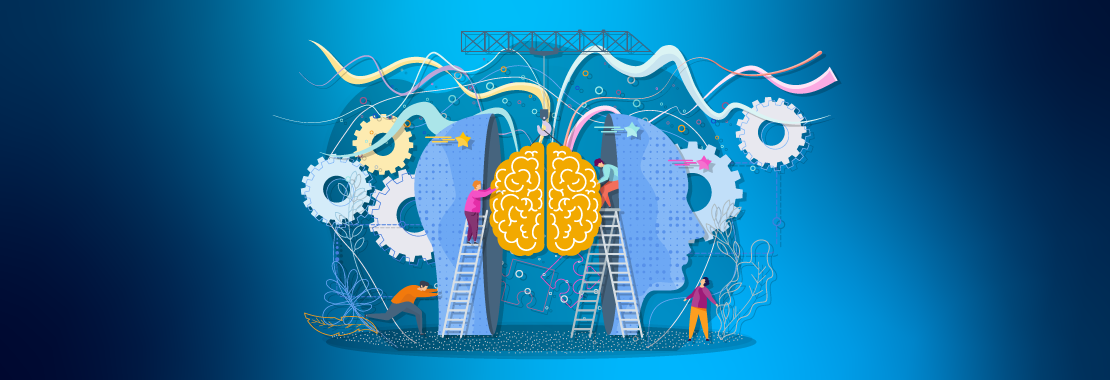Beth Ryan is an Associate Professor of Instruction for Columbia College Chicago in the Business and Entrepreneurship department.
Students arrive on college campuses with technical knowledge and skills, yet they are not always prepared emotionally and socially for the transition to a more independent life and complex education system. As educators, we try to equip them with the knowledge and skills deemed essential for graduation and for sustainable careers. As we plan our classroom content to reinforce knowledge and build skills in particular subject areas, we may often overlook the human struggles our students are experiencing.
When students face increased responsibilities that come with early adulthood—balancing course load, finances, independent living, and social expectations—it is easy to become overwhelmed and scattered. Making space in our curriculum for mindfulness can help students develop the necessary life skills to focus, persist, and succeed.
Mindfulness has become a global trend, but what is it?
Let’s Define
Simply put, mindfulness is being aware of what you’re sensing and feeling in the moment, without interpretation or judgment. College students are less practiced in dealing with the challenges that come with pursuing a degree and increased life responsibilities. I have recognized that students need more support in time and task management. They either overreact and panic with deadlines, or they avoid reaching out for help when they are falling behind. In an attempt to meet students where they are, I have incorporated a more contemplative pedagogical approach and integrated some simple mindfulness activities into my classes. These help students manage stress and anxiety that may impede academic progress.
Let’s Acknowledge
First, we need to know our student population and acknowledge that anxiety and depression rates are rising in young people. This is particularly important if we have been teaching for a long time and are used to previous generations of students. According to a study conducted by Annie E. Casey Foundation, only 45% of Generation Z individuals say their mental health is good or excellent. This is important data for us as educators because it indicates that potentially 55% of our students may be struggling with issues that impact their academic performance.
Let’s Stay Informed
We are overwhelmed with media consumption, and not everything we consume is true. As educators, let’s try to be more disciplined in turning to research-based sources to learn about general environmental factors that are shaping society. And then, let’s consider the lens that Gen Z individuals are experiencing these life events through. Gun violence, sexual assaults, bi-partisan politics, and a global pandemic are just a few of the stressors that are negatively impacting this generation. The American Psychological Association (APA) defines this as a national mental health crisis and young people are saying they could use more support. Since the contextual factors in our environment continue to change, our teaching strategies should also evolve to help students make sense of the complicated world around them as well as find their place in it.
Let’s Keep It Simple
Mindfulness is a rapidly growing global trend that involves a variety of tools, resources, and suggested strategies. Too much emphasis can be overwhelming as well, so I try to keep it simple. Since research shows that students want more support, I begin each class session with a quick “check-in” which encourages students to voice things that are obstacles to them concentrating in class. We also take a one-minute “stand and stretch” break every thirty minutes. I often use a “one-minute silent writing prompt” which allows students to have a moment of quiet reflection. There are a variety of mindful activities that we could continue to thread into our classes no matter what subject matter we teach.
Let’s Develop Skills
Practicing mindfulness involves a variety of skills. Staying in the present moment and responding without judgement is a tall order for any human. I take a few minutes of class time to engage in these activities to help students develop mindfulness skills.
- Practice being in the present moment. I ask students what’s going on in their world at the beginning of class. Then we take 60 seconds to quietly focus on transitioning to the class content. I play calming music during this period.
- Suspending judgement. I ask students to write down their biases and judgements in a particular discussion or text reading. Then I have them practice seeing the situation through another lens and research different points of view.
I use a variety of teaching methods to cultivate deepened awareness, concentration, and reflection. I want students to critically think, and problem solve as they respond to uncertainties. Research shows that “individuals with higher mindfulness have greater resilience, thereby increasing their life satisfaction.” In classrooms, we can help students polish the social, people, and soft skills they need to succeed by practicing mindfulness.
Learn more about the value of mindfulness to student outcomes by watching our webinar.

